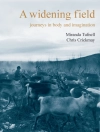Cesare Pugni (1802-1870) made his debut as a composer at La Scala in 1826 with the opera Elerz e Zulmida, later becoming director of the Paganini Institute in Paris where he met the great choreogrpahers of the time. He began working closely with Jules Perrot, first in Paris, then in London. He also worked with Arthur Saint-Leon, Paolo Taglioni, Marius Petipa, and some of the greatest dancers of the century. His time in Paris with Perrot was marked by an extraordinarily intense activity, which accelerated when he reached Her Majesty’s Theatre in London where he presented some of the most renowned ballets of the 19th century, such as Esmeralda (1844) and the Pas de Quatre (1845), which still find their place in some modern repertories. Pugni later followed Perrot to St Petersburg and became official composer of the Imperial Theatres in St Petersburg. His most famous collaboration, with Marius Petipa, now followed, which lasted until Pugni’s death. Some of his ballets already well-known in Europe were transferred to St Petersburg, although he also composed new ballets in Russia. Pugni is known above all for his enormous output of musical works, including more than 300 ballets, a dozen operas, over 40 masses, other polyphonic works, and a few symphonies, among which was a Sinfonia a canone, highly praised by Meyerbeer. This extremely prolific composer was very popular with the public, as all his ballets are easy to to listen to and to understand. He also found no diffculty in adapting his music to suit all sorts of choreographic needs, and many different performers. Doch’ Faraona, or La Fille du Pharaon is a ballet in 3 acts and 9 scenes with prologue and epilogue. The scenario was devised by Vernoy de Saint-Georges and Marius Petipa, with choreography by Petipa. It was first performed on 30 January 1862, in St Petersburg at the Bolshoi Theatre. The principal dancers were Carolina Rosati, Nicholas Golts, Marius Petipa, and Lev Ivanov. The ballet was inspired by Theophile Gautier’s Le Roman de la Momie, and narrates the adventures of the English Lord Wilson and his servant John Bull, who seek shelter from a storm in an Ancient Egyptian tomb. They smoke opium and in their dreams are taken back to the times of the characters buried there: Lord Wilson meets the Pharaoh’s daughter Aspicia during a lion hunt, helps her to escape from the invidious attentions of the King of Nubia, and undergoes various adventures with her in the Egyptian countryside (including a visit to the watery underworld of the King of the Nile where all the great rivers of the world are represented in national dance). He is eventually saved from sacrifice and united with her in marriage, before waking to the cold light of reality. The ballet was a resounding success. The spectacle lasted over 4 hours and featured a cast of 400, 80 of them dancers. The spectacle was prepared in only 6 weeks for Carolina Rosati’s farewell performance. This success secured Marius Petipa’s appointment as maitre de ballet (assistant ballet master) in St Petersburg. It marked the last of Rosati’s appearances in Russia, but thereafter tempted other great ballerinas, including Marie Petipa, Yekaterina Vazem, Virginia Zucchi, Mathilda Kschessinskaya and Anna Pavlova, each of them contributing her own interpretation of the heroine’s part. Marius Ivanovich Petipa (1818 -1910) was a hugely influential French balletmaster, teacher and choreographer who became Premier Maitre de Ballet of the St. Petersburg Imperial Theatres from 1871 until 1903. Petipa created over fifty ballets, some of which have survived in versions either faithful to, inspired by, or reconstructed from the original, including Pharaoh’s Daughter (1862); Don Quixote (1869); La Bayadere (1877); Le Talisman (1889); and Sleeping Beauty (1890) among others. Petipa also revived a substantial number of works created by other ballet masters. His productions became the definitive versions from which nearly all subsequent revivals would be based – Le Corsaire, Giselle, Coppelia, La Fille mal gardee (with Lev Ivanov), The Little Humpbacked Horse and Swan Lake (with Lev Ivanov). There are various dances from Petipa’s original works and revivals that have survived in an independent form in versions either based on the original or choreographed anew by others.
Robert Ignatius Letellier
Cesare Pugni [PDF ebook]
DOCH’ FARAONA La Fille du Pharaon/Pharaoh’s Daughter
Cesare Pugni [PDF ebook]
DOCH’ FARAONA La Fille du Pharaon/Pharaoh’s Daughter
Köp den här e-boken och få 1 till GRATIS!
Formatera PDF ● Sidor 180 ● ISBN 9781443838085 ● Redaktör Robert Ignatius Letellier ● Utgivare Cambridge Scholars Publishing ● Publicerad 2012 ● Nedladdningsbara 6 gånger ● Valuta EUR ● ID 2611419 ● Kopieringsskydd Adobe DRM
Kräver en DRM-kapabel e-läsare












